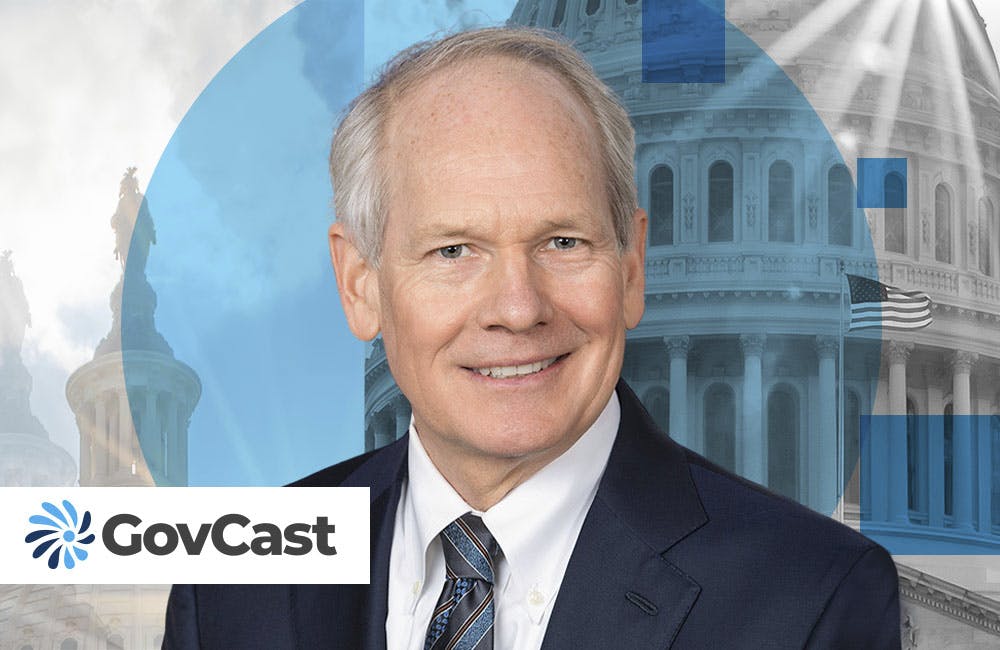HHS, VA are Building Health Equity with Intention
Data strategies are aimed at improving health equity in the long term.

The departments of Health and Human Services and Veterans Affairs are building meaningful, intentional equity programs to improve patient outcomes, agency leaders said during IBM’s Innovations for Federal Health Equity event Wednesday.
VA Executive Director of the Office of Health Equity Dr. Ernest Moy defines equity as “getting everyone the support they need to get the best possible health.” VA uses the term “whole health” to include social and spiritual health in addition to physical and mental.
“Most health relates to social determinants of health and social risks. Addressing health care alone without addressing the social determinants, it is not going to get us to the goals that we want for our veterans,” Moy said.
Dr. Leith States, chief medical officer at HHS’ Office of the Assistant Secretary for Health, said one of the challenges to equity is ideas around social determinants do not get spoken in at the earliest levels of funding and policy development legislation.
“The key here is to find opportunities – where it doesn’t matter what the definition of social determinants of health or equity is that we’re using – where we have something that is future proofed and built in, in a cross-cutting fashion, around all touch points of life to get to the holistic standpoint,” States said.
To improve equity, VA focuses on three key pillars: diversifying the workforce, addressing social determinants through screenings and resource allocation, and using technologies and data to identify and address disparities.
A key component for advancing equity at HHS is evidence development. Government has historically faced challenges with capturing data from harder to reach communities like homeless populations, making it difficult to move past legacy.
“Part of the issue is absence of representation in data,” States said. “You always have these asterisks where we weren’t able to capture XYZ demographic. So, we don’t necessarily know what’s happening in [certain] communities … at a granular level to look at some of the root causes. It’s unfortunate because we end up with this glowing representation saying, ‘oh, yeah, telemedicine is great,’ but we don’t know who it’s especially great for and what the corrective issues are to take.”
The adoption of real-world data is one solution that has gained traction throughout the pandemic. With this information, agencies across HHS are able to access and consider data that’s not found in a randomized controlled trial.
“Now, we are able to have incorporation of a much larger dataset. Just because of the sheer volume, you can have increased validity of that data set,” States said. “The capacity of an EHR like the VA – you have 3.2 million records to look at – there are a lot of things to distill down that you were not able to see before … they do give you a better hypothesis generator that can actually look at high value targets don’t get away from the general understanding.”
At VA, Moy said the agency is improving equitable health care delivery by examining algorithms for bias. Over time, VA gradually tried to remove unnecessary race-based algorithms from its system overall.
“We were able to flip our whole system off of using one race-based algorithm to the independent algorithm that is free of that kind of bias and works perfectly well,” Moy said. “We also do a lot of assessments of our data to try to ensure that it’s at least as good as possible.”
This is a carousel with manually rotating slides. Use Next and Previous buttons to navigate or jump to a slide with the slide dots
-

CDC Updates Public Health Data Strategy
Accelerating data sharing through capabilities like electronic case reporting make up a large portion of the new two-year plan.
3m read -

HHS Makes One-Stop Cybersecurity Shop in ASPR
The agency is working on standards and cyber incident response capabilities to help health care organizations combat ransomware threats.
4m read -

How VA is Using Digital Services to Expand Care to Veterans
CIO Kurt DelBene says the the agency’s 2024 priorities included AI adoption, hiring and a better user experience for veterans.
30m listen -

Women Technologists Highlight Workforce Impacts in FDA IT Plan
Tech leaders tackle amplifying women in the workforce as the agency works toward its two-year IT modernization plan.
3m read








